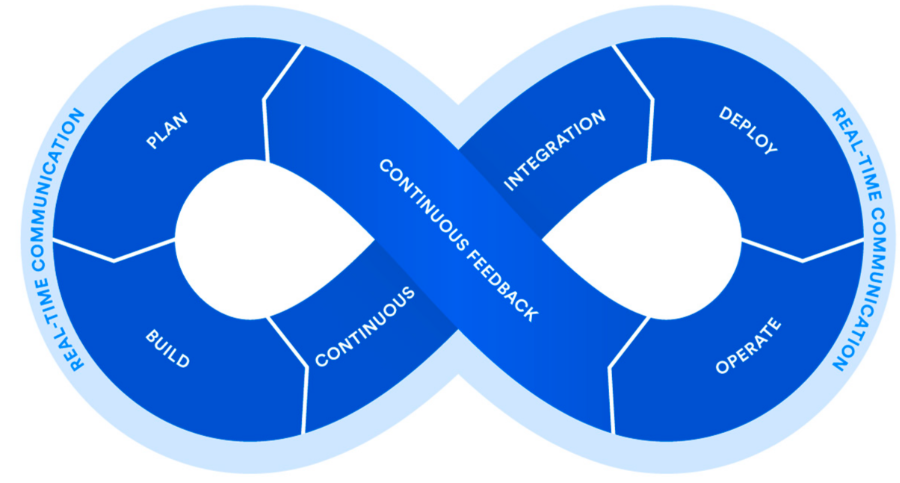
The combination of DevOps practices and network automation is transforming how organizations manage and operate their networks. By using automation tools, scripting languages, and programmable infrastructure, network teams can improve efficiency, streamline operations, and boost overall network performance.
In this blog, we’ll look into the benefits, tools, practices, and challenges that come with network automation within the DevOps framework. We’ll also share real-world examples and practical tips for organizations that want to implement network automation and DevOps principles to optimize their network management.
Benefits of Network Automation with DevOps
Increased Operational Efficiency: Network automation removes the need for manual configuration and repetitive tasks, making network changes quicker and more accurate. Automation in provisioning, configuration, and monitoring saves time and reduces errors, leading to better resource usage and streamlined operations.
Enhanced Flexibility and Scalability: Automation helps quickly deploy and scale network resources, allowing businesses to adapt quickly to changing demands. With the ability to automate provisioning and configurations, networks become more flexible and scalable.
Improved Reliability and Consistency: Automation ensures that network configurations stay consistent, minimizing human errors and network downtime. By standardizing processes and configurations, organizations can enhance the reliability and predictability of their network operations.
Faster Problem-Solving and Issue Resolution: Automated network monitoring and diagnostics help identify and address issues faster. Network teams can proactively spot anomalies, analyze performance, and quickly fix problems, improving network uptime and overall performance.
Tools and Technologies for Network Automation
Infrastructure as Code (IaC) Tools: Tools like Ansible, Puppet, and Chef allow network configurations to be managed as code. These tools offer version control, change tracking, and collaboration features, making network configurations repeatable, auditable, and scalable.
Network Automation Frameworks: Platforms like Cisco NSO, Juniper NorthStar, and Arista CloudVision provide centralized control and orchestration for network management. These frameworks give a comprehensive view of the network, enabling teams to automate complex operations and maintain consistency across the network.
Programmable Interfaces and APIs: APIs and programmable interfaces enable direct control and configuration of network devices. They provide a standardized way to interact with devices, allowing automation. Common programming languages like Python, YAML, and JSON are used to create automation scripts.
Scripting and Automation Languages: Scripting languages such as Python, and automation-focused languages like YAML and JSON, are crucial for network automation. These languages help create scripts and playbooks to automate tasks like configuration, monitoring, and troubleshooting.
DevOps Practices for Networking
Version Control and Code Repositories: Treating network configurations as code by using version control and repositories offers benefits like change tracking, versioning, and collaboration. This approach helps teams manage network configurations effectively and encourages collaboration.
Continuous Integration and Continuous Delivery (CI/CD) Pipelines: CI/CD pipelines enable automated testing and deployment of network changes, speeding up and improving the reliability of network updates. By automating builds, testing, and deployment, organizations can quickly implement network changes with fewer errors.
Collaboration and Communication Tools: Tools such as Slack, Microsoft Teams, or Atlassian Confluence improve communication between development and operations teams. These tools allow for seamless information exchange and collaboration, which helps break down silos and improve teamwork.
Monitoring and Logging Tools: Tools like Nagios, Grafana, or Splunk provide real-time visibility into network performance and issues. Network teams can monitor network health, detect problems early, and analyze network behavior, which helps with troubleshooting and identifying root causes.
Challenges and Considerations
Security Concerns: Security is crucial when automating network tasks. Organizations must use strong access controls, secure coding practices, and encryption to protect their networks from security risks. Network automation should follow best practices to prevent vulnerabilities.
Skillset and Training Needs: Network engineers need to acquire new programming and automation skills to implement network automation successfully. Upskilling through training programs and certifications can help teams effectively adopt automation.
Compliance and Regulatory Requirements: Automated network operations must comply with industry regulations, especially in sectors like finance and healthcare. Ensuring compliance with relevant standards is a key consideration when introducing network automation.
Cultural and Organizational Challenges: Resistance to change and organizational barriers can slow down the adoption of network automation. Overcoming these challenges requires fostering a culture of collaboration, highlighting the benefits of automation, and providing the necessary training and support.
Conclusion
To sum up, network automation with DevOps brings significant benefits like improved efficiency, scalability, reliability, and faster troubleshooting. By utilizing automation tools and embracing DevOps principles, network teams can streamline their operations and enhance performance.
However, organizations need to address challenges related to security, skill development, compliance, and organizational change to implement automation successfully. By overcoming these obstacles, they can unlock greater efficiency, flexibility, and reliability, helping them stay competitive in a fast-evolving tech landscape.













